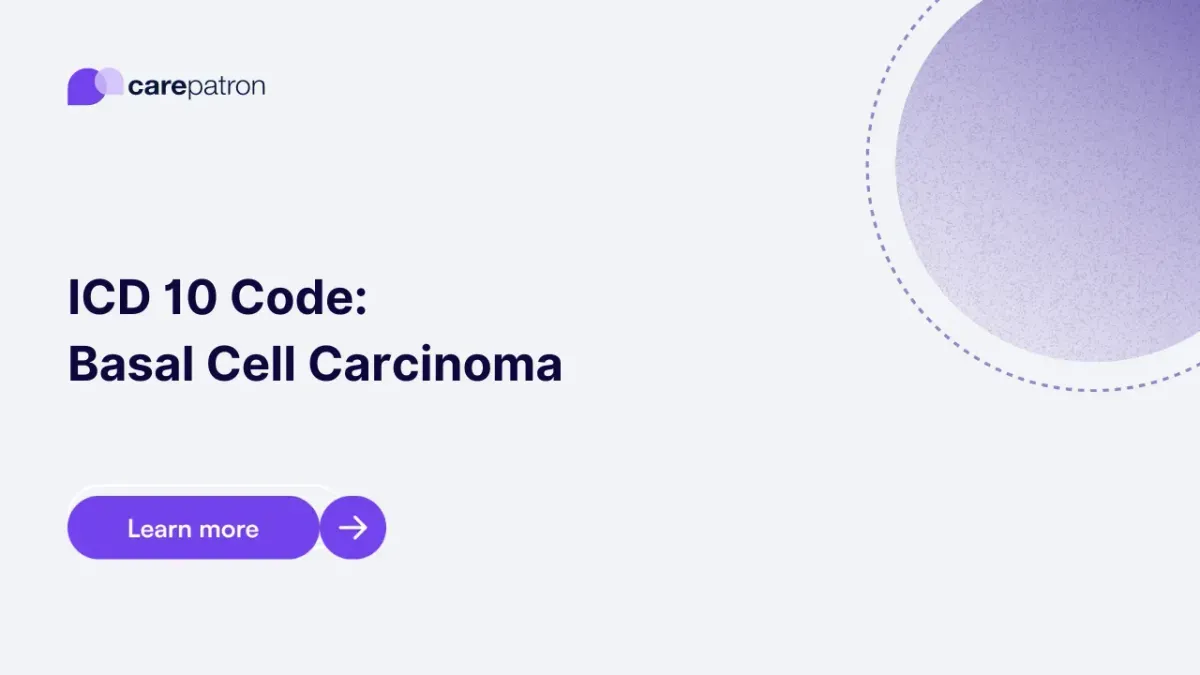
Basal Cell Carcinoma ICD-10-CM Codes | 2023
Explore essential ICD-10 codes for Basal Cell Carcinoma diagnosis, ensuring accurate documentation and billing for this skin cancer.
Use Code
Commonly asked questions
Use a Basal Cell Carcinoma ICD code when documenting a patient's diagnosis of basal cell carcinoma for medical billing and statistical purposes.
Yes, Basal Cell Carcinoma diagnoses are billable and are essential for healthcare reimbursement.
Common treatments for Basal Cell Carcinoma include surgical excision, Mohs surgery, cryotherapy, radiation therapy, and topical therapies.
EHR and practice management software
Get started for free
*No credit card required
Free
$0/usd
Unlimited clients
Telehealth
1GB of storage
Client portal text
Automated billing and online payments
